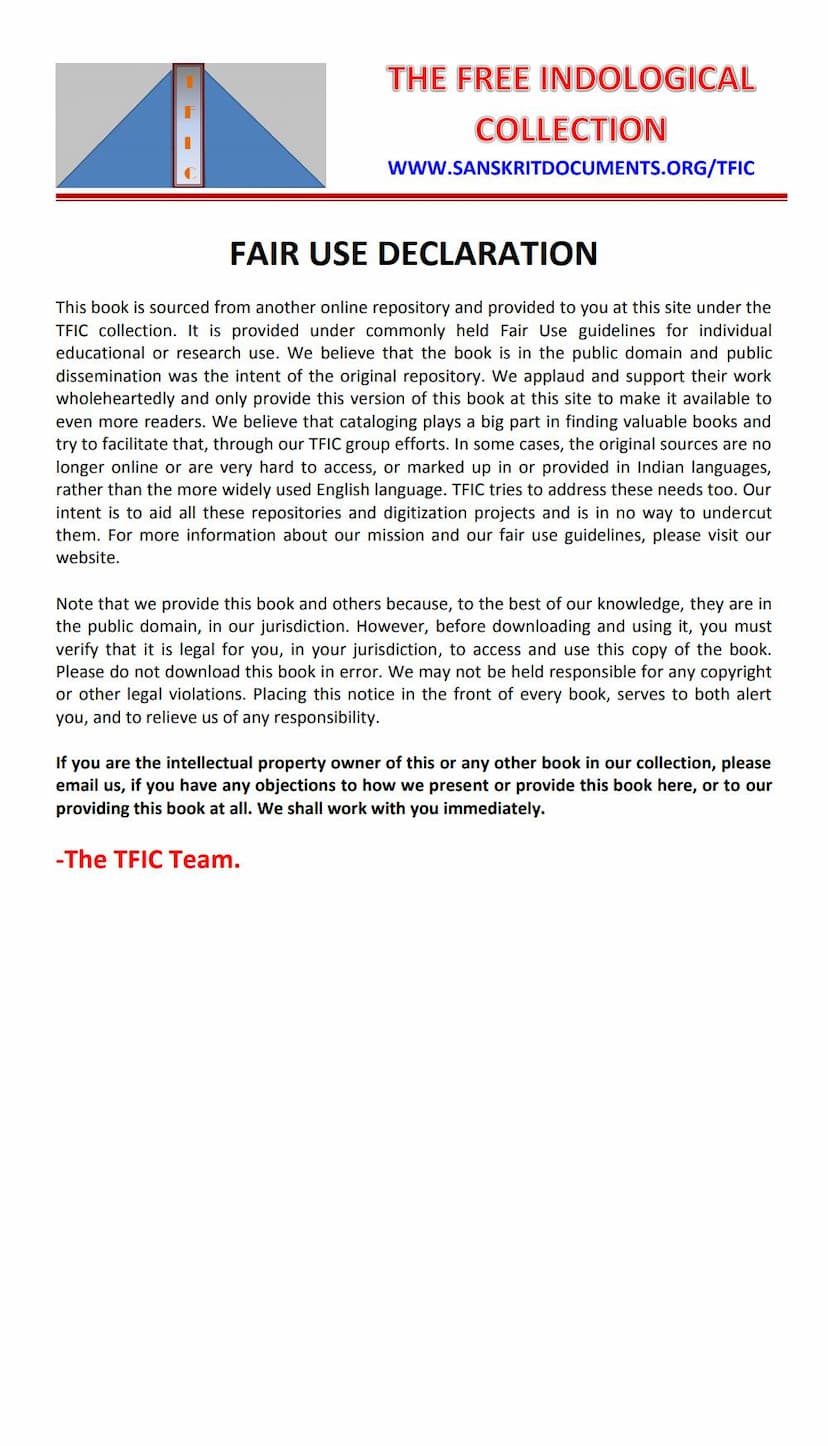Jain Meghdutam
Added to library: September 2, 2025

Summary
Here's a comprehensive summary of the Jain Meghadutam, based on the provided text, focusing on its content, context, and significance within Jain literature:
Book Title: Jain Meghadutam Author(s): Merutungacharya (primary author of the main work), Shilratnasuri (commentator), Chaturvijay (editor/compiler). Publisher: Atmanand Jain Sabha, Bhavnagar. Context: This text is presented as a Jain adaptation of Kalidasa's famous Sanskrit poem, Meghadutam. The introduction (Prastavana) and commentary provide extensive context, discussing the tradition of "Duta Kavyas" (messenger poems) in Indian literature and highlighting Jain contributions to this genre.
Overall Summary:
The Jain Meghadutam is a significant work within Jain literature that reimagines the classic messenger poem theme, originally popularized by Kalidasa, within a Jain framework. While drawing inspiration from Kalidasa's Meghadutam, it is not a mere imitation but an independent creation that weaves Jain philosophical and narrative elements into the messenger poem structure. The story likely revolves around a separation and a message conveyed by a cloud, a common motif in such poems.
Key Themes and Narrative Elements:
- Inspiration from Kalidasa's Meghadutam: The text acknowledges Kalidasa's Meghadutam as a foundational inspiration. The "Prastavana" extensively discusses how many poets, both Jain and non-Jain, have attempted to emulate Kalidasa's work, often with limited success in replicating its originality, beauty, and depth.
- Jain Adaptations of Messenger Poems: The introduction lists several other Jain messenger poems, such as "Parthabhyudaya" by Jinasenacharya, "Pavanaduta" by Vadichandra, and "Nemiduta" by Vikram. This highlights the Jain tradition's engagement with and contribution to the broader genre.
- Focus on Jain Principles: While the specific plot details are not fully elaborated in the provided excerpt (which is primarily the introduction and commentary), the work is imbued with Jain principles. The commentary, particularly when discussing "Shiladuta" and "Nemiduta," emphasizes themes of renunciation, detachment from worldly pleasures, the pursuit of spiritual liberation (moksha), and the consequences of attachment and desire. The ultimate aim is to guide the reader towards a life of virtue and spiritual attainment.
- The Central Message: The core of the poem, as in the original Meghadutam, is a message conveyed by a cloud. The Jain Meghadutam adapts this by likely framing the message within the context of Jain teachings and the path to liberation. The commentary on "Nemiduta" suggests a narrative involving Rajimati and Lord Neminatha, where Rajimati's lament and yearning for Neminatha, who has embraced asceticism, forms a significant part of the story.
- Moral and Spiritual Instruction: The Jain Meghadutam aims to be more than just a literary work; it serves as a vehicle for moral and spiritual instruction. The commentary explicitly contrasts the ephemeral pleasures of worldly life (often associated with "Shringar Rasa" or the erotic sentiment) with the lasting peace and liberation found in asceticism and spiritual pursuit ("Shanta Rasa"). It advocates for overcoming desires and attachments to achieve true happiness.
- Literary Style and Merit: The commentary provides critical evaluations of various Jain messenger poems, comparing their literary merits. While acknowledging the difficulty of matching Kalidasa's genius, it suggests that some Jain works possess their own unique qualities, such as "Prasadika" (clarity and accessibility of language) and "Lalita" (gracefulness). The commentary on the Jain Meghadutam itself mentions that the work is "Prasadi" (easy to understand) and its verses are "Shlishta" (complex and requires erudition). The commentary by Shilratnasuri is described as simple and helpful for students.
Key Figures Mentioned:
- Merutungacharya: The primary author of the Jain Meghadutam. The text provides biographical details, placing him in the 14th century (Vikram Samvat 1403-1471) and mentioning his guru, Mahindra Suri. He was a significant Jain scholar and monk with several other literary contributions.
- Shilratnasuri: The commentator whose detailed explanation accompanies the poem. He is described as a disciple of Jayakirti Suri.
- Chaturvijay: The editor and compiler of this specific edition, responsible for sourcing manuscripts and bringing the work to publication.
- Lord Neminatha and Rajimati: Their story, central to the Jain adaptation, highlights themes of renunciation and the philosophical journey.
- Kalidasa: His Meghadutam is the primary literary precedent and point of reference.
- Other Jain Poets: Mentioned in the introduction for their contributions to the "Duta Kavya" genre, including Jinasenacharya, Vadichandra, and Charitrasundargani.
Significance:
The Jain Meghadutam is valuable for several reasons:
- Literary Adaptation: It demonstrates how classical Indian literary forms were adapted and enriched by Jain scholars to convey their unique worldview and teachings.
- Preservation of Jain Narratives: It plays a role in preserving and popularizing the stories of Jain Tirthankaras and other important figures within the Jain tradition.
- Scholarly Engagement: The extensive commentary by Shilratnasuri offers deep insights into the poem's meaning, grammar, rhetoric, and philosophical underpinnings, making it a rich resource for Jain scholars.
- Cultural and Religious Insight: The work provides a window into the cultural and religious values of Jainism, emphasizing detachment, ethical conduct, and the ultimate pursuit of liberation.
In essence, the Jain Meghadutam is a sophisticated Jain interpretation of a classic literary theme, offering a blend of poetic beauty and profound spiritual wisdom, meticulously explained by its esteemed commentators.